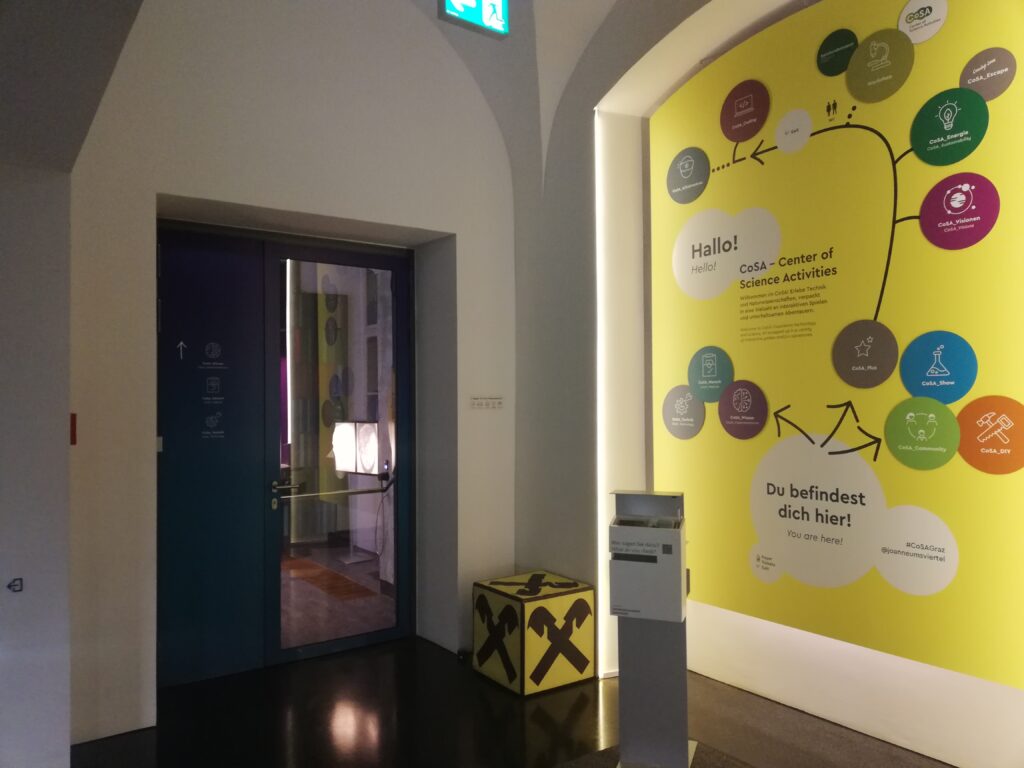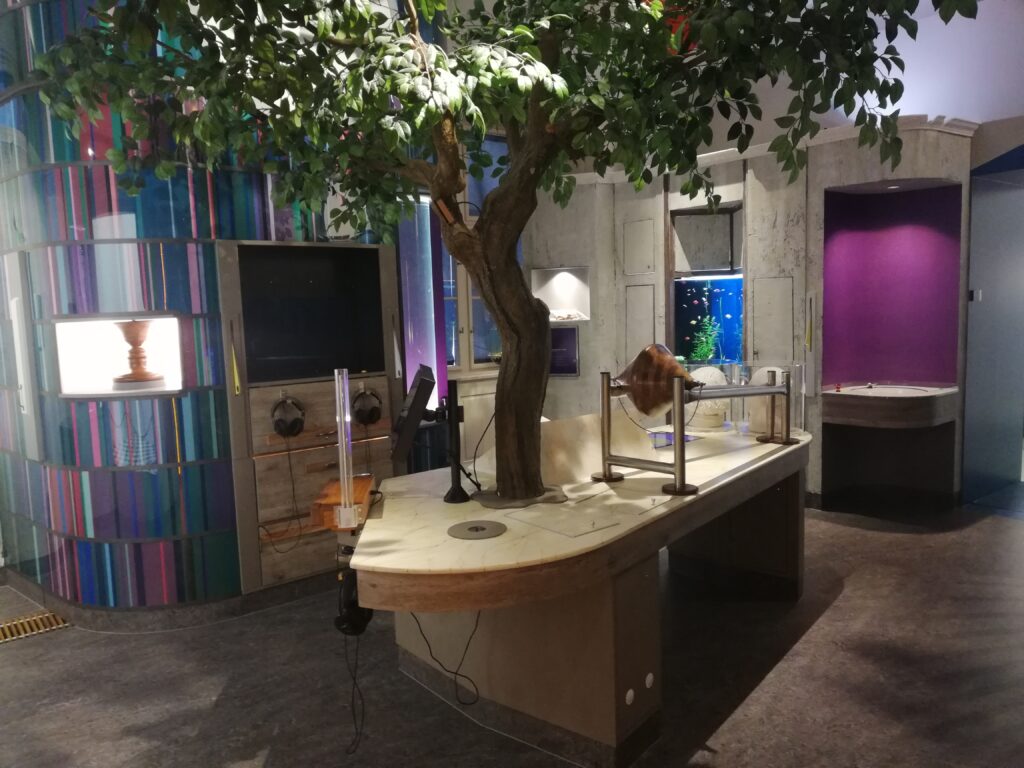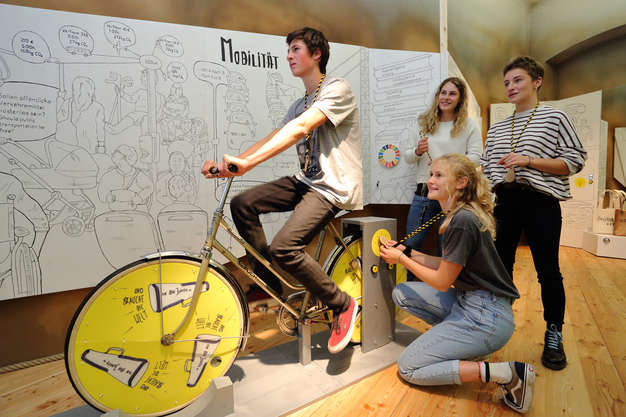Haus der Nature Salzburg
Permanent exhibition : the brain , intelligence, consciousness, emotion
I was particularly impressed by this exhibition. The space is really big and allow you to explore freely like you enter a curiosity cabinet. Each area of the exhibition focus on a topic related to the brain. This exhibition deals with everything related to brain. Visitors can explore the organ through all perspectives : anatomy, personality, learning, perception, consciousness and sleep. There are several hands-on exhibits where visitors can try games and play with their memory.
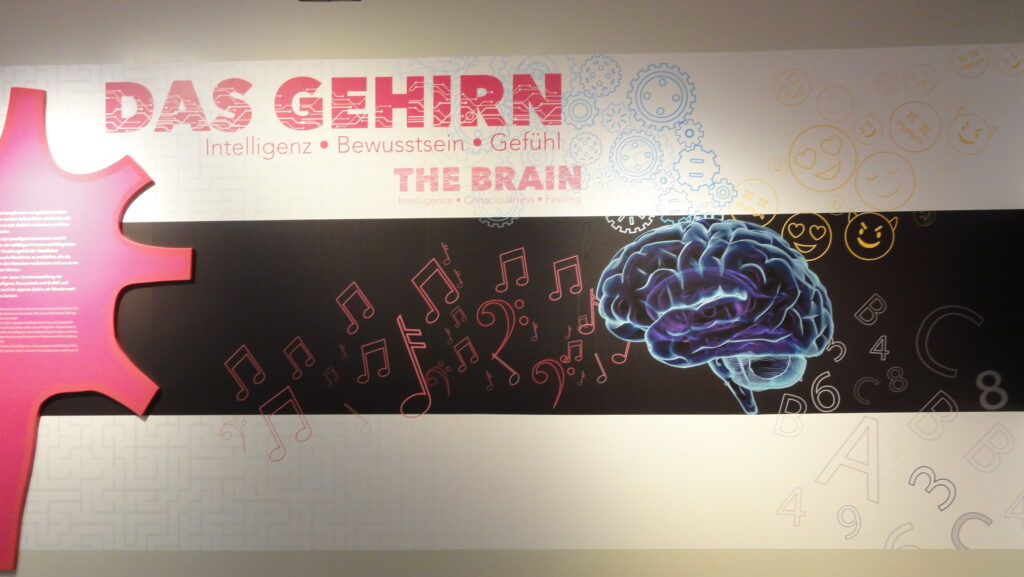
On the opposite of the first BPE we described in the COSA center, I found the graphics in this museum much more comprehensible and visible as you can see in the picture below :

When entering the exhibition I was surprised to see this little robot in the middle of the path. Its aim is to guide the visitor through the exhibition. It can talk and guide you through the stations while providing explainations. A lot of childs were playing with it. I find the idea interesting since of the coronavirus situation it allows you to have explaination without any guide. I was impressed that it attracted so much childs either.


This picture shows the setup of the EEG sampling (electro- encephalography). This is something that could be complex to explain, but that is quite easy to show. It work by placing electrodes on the head and the inputs are recolted and processed by a computer.

The exhibition uses a lot of tactile devices as this one. On this screen, you can learn about anatomy and functions of the brain by simply clicking on the area where you want to have information about. The brain is represented in 3D and you can look at it through different angles.

The next part deals with the topic of drugs and intoxication. I really liked how it was depict and the little windows which allow you to see how it looks like. Since those products are usually prohibben it’s not easy to see how they look. I found the pictures on the wall really clear.

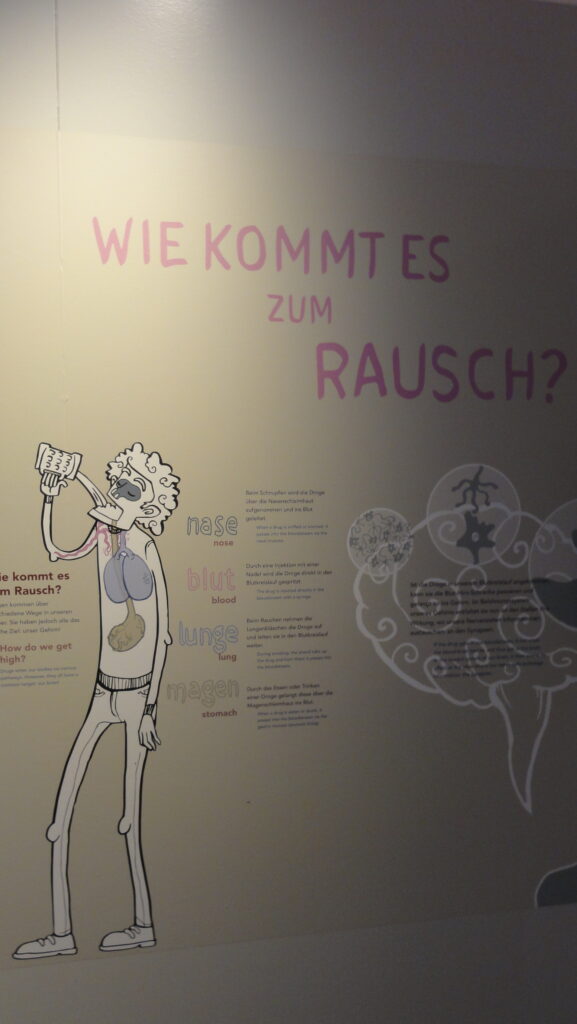
This part of the museum was more showing than hands-on, but we can find a lot of hands-on experiments in the science center part. The success of this first exhibition for me resides in the clear graphics, and 3D representations of complex topics around neuroscience, which help to understand it without too much difficulty.
Hands-on experiments in the Science Center
This science center is really focus on children hands-on approaches experiments. It presents the themas : energy and lifting, acoustics and music, physics and technology, body and fitness. Every setup and activity is really simple to allow young children to interact with.
Energy and Lifting
On the bottom floor of the Science Center, everything revolves around the theme of energy and lifting. Hands-on experiments make it easier to understand the law of the lever, hydraulic lift and power transmission and the generation of electricty from water power and solar energy.
The question that must rise into everyone’s mind are : How do turbines work? How can we produce electricity from generators? Different solar energy experiments offer insight into the technology of photovoltaics. And the water experiment area invites us to get our hands wet, raise and dam water, and discover the incredible power that lies hidden in water.


Acoustics and Music
The first floor of the Science Center is devoted to the phenomena of acoustics. From the wave nature of sound to the exploration sounds and noises and the transfer of sound to the human ear, here visitors can explore everything relating to the theme of sound.
A special highlight is the “Feel Mozart” area: with a violin you can actually walk on, the vibrations of music can be not only heard, but also felt.
In the Target Singing area, you can check if you’ve hit all the right notes. And finally, in the screaming cabin you can test out the volume of your own voice.

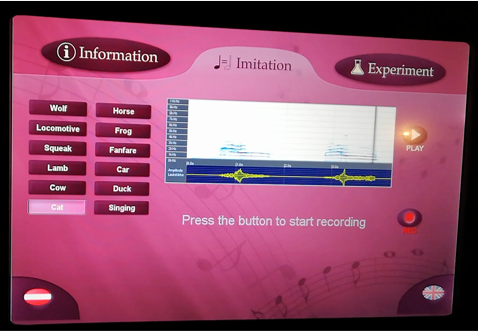
Physics and Technology
The second floor of the Science Center offers a myriad of experiments in physics, technology, and mathematics. Simple experiments provide confirmation of great natural laws: build a bridge and then test it out right away, launch a rocket using compressed air, make a ball float as if by magic, feel the aerodynamic lift with your own body. . . here you’ll learn what forces are capable of doing!
Questions come up and are answered by doing experiments. How do the fastest and slowest gears work? Why is fine powder used for cement and coffee? Nothing compares to experiencing it for yourself!
Body and Fitness
Also on the second floor, a large area of the Science Center is devoted to the dexterity, movement, and health of the human body. Our own body is the focus here with simple experiments and athletic contests.



Conclusion :
These two examples highlight the importance of good graphics and the of haptics in science centers. Good graphics help to categorize sometimes complex information and have the “big picture” around a subject, while haptic supports, whether highly technological or not, help to apprehend concepts, test them to understand them, and facilitate memorization.
In the next article I will try to answer to the question around the learning strategies :
- Which strategies are the best for public implication and a better learning ?
- How to create funny but educational experiences ?
- Why is multisense particularly interesting for exhibition design and learning ?
Source :


